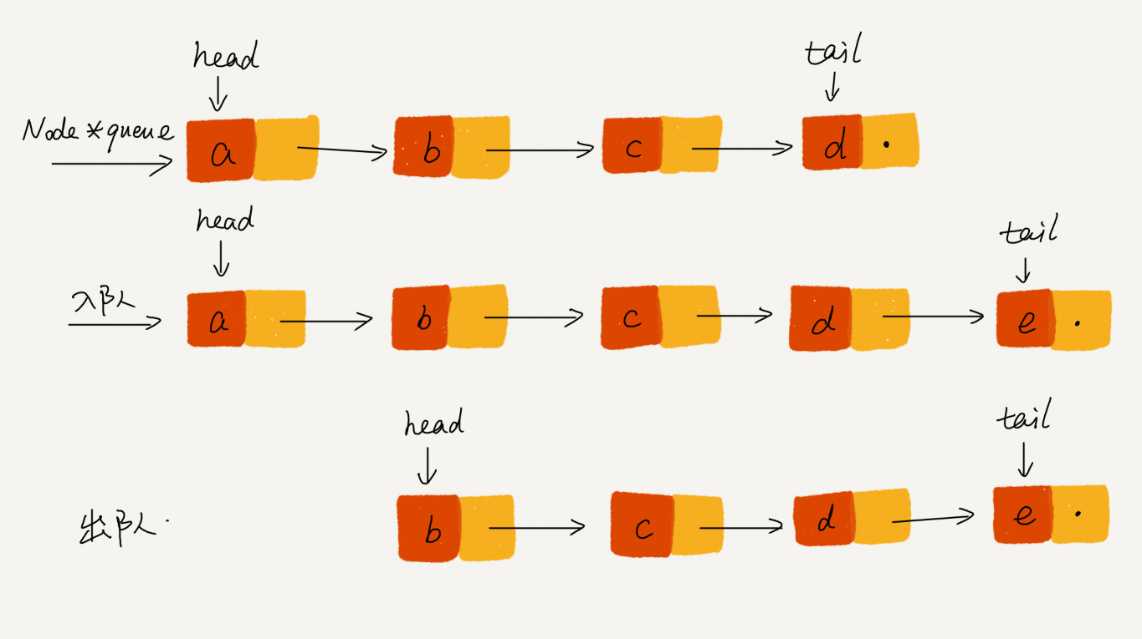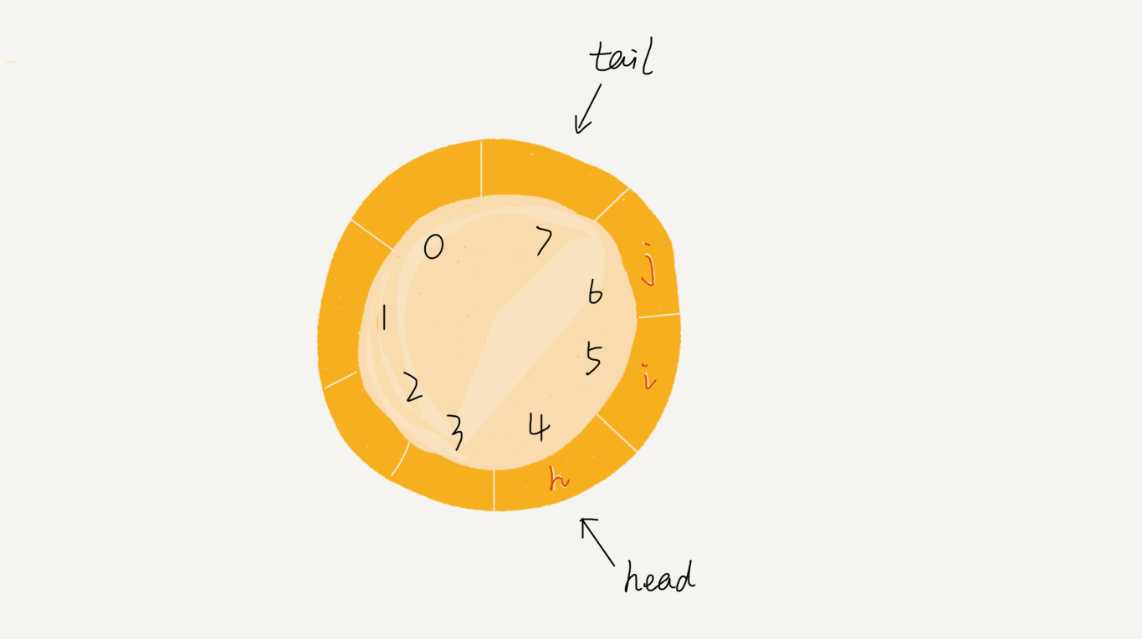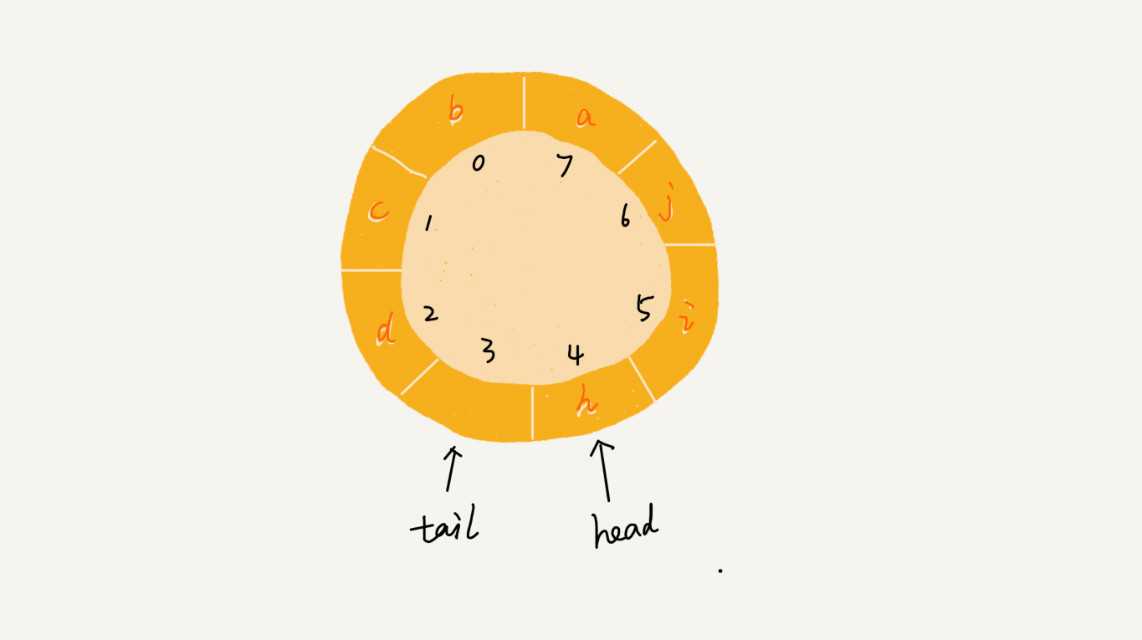标签:ring 取数据 简单 一个 bool 返回 更新 利用 网上
- 队列的定义:先进者先出的一种操作受限的线性表数据结构,它包含入队enqueue()和dequeue()两个基本的操作;

作为一种非常基础的数据结构,队列的应用也非常广泛,特别是一些具有某些额外特性的队列,比如循环队列、阻塞队列、并发队列。它们在很多偏底层系统、框架、中间件的开发中,起着关键性的作用。比如高性能队列 Disruptor、Linux 环形缓存,都用到了循环并发队列;Java concurrent 并发包利用 ArrayBlockingQueue 来实现公平锁等
- java中实现一个queue(数组)
// 用数组实现的队列
public class ArrayQueue {
// 数组:items,数组大小:n
private String[] items;
private int n = 0;
// head表示队头下标,tail表示队尾下标
private int head = 0;
private int tail = 0;
// 申请一个大小为capacity的数组
public ArrayQueue(int capacity) {
items = new String[capacity];
n = capacity;
}
// 入队
public boolean enqueue(String item) {
// 如果tail == n 表示队列已经满了
if (tail == n) return false;
items[tail] = item;
++tail;
return true;
}
// 出队
public String dequeue() {
// 如果head == tail 表示队列为空
if (head == tail) return null;
// 为了让其他语言的同学看的更加明确,把--操作放到单独一行来写了
String ret = items[head];
++head;
return ret;
}
}上面的代码满足了一个基本队列:主要涉及申请存储空间、入队条件判断、出队的条件判断,不足的是,当数组的最有一个地址被装满后,即使head指针小于tail,也不能再进行入队了,这个时候就需要数据搬移, 当插入新的元素之后,但不是每次有入队操作,都需要搬移数据,我们只需在队列没有空闲的空间时,才需要集中触发一次搬移的操作,这时候需要对入队的enqueue()函数进行改造:
// 入队操作,将item放入队尾
public boolean enqueue(String item) {
// tail == n表示队列末尾没有空间了
if (tail == n) {
// tail ==n && head==0,表示整个队列都占满了
if (head == 0) return false;
// 数据搬移
for (int i = head; i < tail; ++i) {
items[i-head] = items[i];
}
// 搬移完之后重新更新head和tail
tail -= head;
head = 0;
}
items[tail] = item;
++tail;
return true;
}示意图:

- 基于链表的队列实现方法

- 循环队列

完成循环队列的代码,最关键的是:确定好队空和队满的判定条件,队满的判断条件是 tail == n,队空的判断条件是 head == tail;

就像我图中画的队满的情况,tail=3,head=4,n=8,所以总结一下规律就是:(3+1)%8=4。多画几张队满的图,你就会发现,当队满时,(tail+1)%n=head;
public class CircularQueue {
// 数组:items,数组大小:n
private String[] items;
private int n = 0;
// head表示队头下标,tail表示队尾下标
private int head = 0;
private int tail = 0;
// 申请一个大小为capacity的数组
public CircularQueue(int capacity) {
items = new String[capacity];
n = capacity;
}
// 入队
public boolean enqueue(String item) {
// 队列满了
if ((tail + 1) % n == head) return false;
items[tail] = item;
tail = (tail + 1) % n;
return true;
}
// 出队
public String dequeue() {
// 如果head == tail 表示队列为空
if (head == tail) return null;
String ret = items[head];
head = (head + 1) % n;
return ret;
}
}
- 阻塞队列与并发队列
阻塞队列其实就是在队列基础上增加了阻塞操作。简单来说,就是在队列为空的时候,从队头取数据会被阻塞。因为此时还没有数据可取,直到队列中有了数据才能返回;如果队列已经满了,那么插入数据的操作就会被阻塞,直到队列中有空闲位置后再插入数据,然后再返回。
阻塞队列存在并发的问题:

线程安全的队列我们叫作并发队列。最简单直接的实现方式是直接在 enqueue()、dequeue() 方法上加锁,但是锁粒度大并发度会比较低,同一时刻仅允许一个存或者取操作。实际上,基于数组的循环队列,利用 CAS 原子操作,可以实现非常高效的并发队列。这也是循环队列比链式队列应用更加广泛的原因。在实战篇讲 Disruptor 的时候,我会再详细讲并发队列的应用。
标签:ring 取数据 简单 一个 bool 返回 更新 利用 网上
原文地址:https://www.cnblogs.com/liweiweicode/p/11966228.html